Archives
Categories
- #lolfoodies
- Curation
- E-Dogz
- Edible Invasives
- Eric's Germany Kitchen
- Food shots
- Food Writing
- Grow Room
- Hot Mix
- Jams
- Last Meals
- Other
- Ox-Bow
- Piranha Club
- Projects 2010
- Projects 2011
- Projects 2012
- Projects 2014
- Projects 2016
- Projects 2018
- Projects 2019
- Projects 2105
- Publications
- Real talk
- research
- Signage
- Vermin Dinner Parties
- Works 2008
Tags
#bloodlimes #lolfoodies Alberto Aguilar Asian Carp BBQ bone marrow Bread KC Chicago foods Citric Benevolence Cartel Co-op E-Dogz Edible Invasives Entomophagy Eric's Germany Kitchen farmers flea market FOOD Food shots Gringo Grow Room hotdogs Hot Mix Jim Shoe Kansas City Last Meals LTHForum mother-in-law Mushrooms neighborhood No Thought For Food Ox-Bow pigeon Piranha Club Pleasanthouse raccoon Signs Sonny's Starowitz Street Food Super Sub Top 10s tribute Vermin Dinner Parties Z-Dog ZatkoffLinks
GROW ROOM
There was this door in the basement of Roots & Culture. A wide door at about three feet, made of steel with a really intense lock- a thick deadbolt with a keyhole. When I moved in, I never received a key for this door.
The basement houses several art studios that I rent to my friends and it also serves as a hangout spot of sorts. What lie behind the mysterious door had provided plenty of postulating amongst the gang. The basement sits directly over the Blue Line, so my personal theory was that the door could have been some sort of remote access point to the subway below. But why no signage or contact if the access belonged to the city? Personally, I had stopped wrapping my brain around the door some time ago. There was something about it that had a “Lost” quality to it- an ominous portal into a past world filled with esoteric secrets and perhaps a mystical energy vortex that had its own consciousness. Its like the door was willing me to forget about it.
Carmen has always been a more observant kind of guy than myself, and his studio has a clear view of the ominous doorway. I’m not sure how long he had been planning to bust through the door, but clearly he had intentions.
We were in the midst of an epic party weekend- there were spirited gatherings three nights in a row at the house. On night two at about 2 am Carmen led a group of partiers down to the door. Everyone was quite amped up about the prospective discovery. Evident by the bashed-at state of the hinges and handle it was clear that Carmen had already begun his hell-bent mission to break through to the other side. A final blow to the door handle granted us access.
First a waft of cool, stale air damp with mildew. And a light switch. It was a room- my subway theory was disproved. It was partially finished in the style of the rest of the basement with unpainted drywall and an elevated plywood floor. The wall between the room and the rest of the basement had been reinforced with cement. There were several wire racks and a desk in the room, on which we found two boxes. The first contained unopened shrink- wrapped packages of currency bands listing increments from $50 to $10,000. Clearly, some business had been intended for this vault. The second box contained an odder product, hundreds of packaged Saran brand “Quick Covers”, those plastic wrappers with an elastic band that are nearly indistinguishable from shower caps. We searched the drawers of the desk and found a binder containing lists of addresses with a letterhead implicating the business that had previously occupied the space, Sunrise Financial. In the bottom drawer we found, perhaps the most thrilling discovery- an unopened money counter.
The small crowd that had followed us down to open the vault was ecstatic with intrigue and theories about the purpose of the room were tossed about wildly. Embezzlement, money laundering, drug dealing, counterfeiting, we ran through all the possible sinister deeds. The possibility of finding further treasures was engrossing and I, as the proprietor of the space and therefore rightful beneficiary of any further discoveries, was first to take a hammer to the drywall. Trashing drywall is always a good time and we definitely had at it. But alas, no findings of a secret stash spot. This was to be our anti-climactic Geraldo Rivera’s “Al Capone’s Vaults” moment. Obviously there had been big plans for the room, but the fact that all the gear was still packaged and unopened pointed to the fact that whatever was intended didn’t quite get off the ground. In the end, we had some fun with the money counter and the whole experience definitely impressed our friends. Perhaps the biggest reward was new real estate in the basement, albeit now a heap of trashed drywall.
The room sat in disarray for three months. The now potential of the room and the nagging responsibility of fixing it up held my attention better than a mysterious door. There were suggestions to build out an extra bedroom. But the new room seemed somewhat toxic with years of mold accumulation. More storage- boring. “Dude- grow room” came up more than a few times, but there was too much at stake for me as a property owner and director of the nonprofit organization housed in the space to even consider cultivating weed down there. Maybe there was potential to stage some sort of legal horticultural project though. Mike Wolf, who is headquartered in the basement, started a project to compost our organic waste materials and he already had a grow lamp set up with some sprouting things of some sort, so expanding these operations seemed to be a logical step.
The entirety of the space- the gallery, apartment, and basement- completely lacks access to green areas, and factoring in the drab lifelessness of the Chicago winter, we are stuck inside. The grow room idea was tweaked into something productive- we could grow simple, fast growing things to eat like lettuces and herbs. Also mushrooms, which seem appropriate for the cavern-like space, growing quickly with little light. The introduction of oxygen producing plants would also improve environmental quality for both the festering vault room, and also the entirety of an area where we work and some of us live. The four of us share interests in meditation and spiritual cultivation, so we agreed that the space could also function as a sort of sanctuary. Ryan Fenchel, a resident studio dweller, who is somewhat of a master carpenter has designs for furniture which we will build for housing planters and for seating areas.
The Grow Room will function as an indoor garden, providing simple food and improved living conditions for the whole of the space, while providing a tranquil respite from the harshness of the urban lifestyle. The drywall has finally been repaired, floor plans have been drafted, and seeds have been planted.
The “Root Cellar” collective, as we basement dwellers have coined ourselves, is in the process of building out the space and tending to the seedlings. This project is meant to be shared- opening the door to those who seek a moment of contemplation and submersion into a biologically energized environment. We hope to open the project to the public in early March. Visitation is limited to one person at a time and participants will be asked to make reservations for half hour or hour time allotments. The schedule will be posted here closer to the opening of the project.
2009: Top 10 Food
If last year’s top 10 was assembled to gear up for the economic downturn, this year’s reflects the depths of the crunch on the old bank book. I must say that the challenge of resourcefulness can be quite rewarding- eating well for not much money is an affirmation of simple joys. A nearby selection of cheap ethnic grocers and the foresight to stock up yielded many pleasurable meals at home. Rich’s Deli, a Polish grocer was indispensable this year for cheap groceries and beer. I highlighted Joong Boo Korean market last year and this place was still in full effect in 09- fresh veggies and meat from legitimate- seeming farming practices, big bags of grain, pungent condiments, and of course the $1.99 bag of kimchi dumplings which can feed a whole late night posse on half a bag (and they have no MSG or preservatives!). Speaking of late night drunken eating- these were some of the more frequent moments when splurging was to occur- big old rounds of made-fresh-to order fried chicken wings served from behind bullet proof glass from the so-dingy-you-shouldn’t-look-too- closely Super Sub- probably the most often eaten out fare of the year, always smashed around the countertop with plenty of hot sauce and Kewpie mayo. It was a good year at home/ the gallery for cheap communal meals and get-togethers. The R & C brunch parties definitely helped pay off some heating bills, and I also thought they provided great convivial moments during the shitty weather months. Kimchi played a huge role this year- always a jar fermenting away, including at the Hyde Park Art Center’s Artists Run Chicago show, where I demonstrated the process, left it to ferment in the gallery, and then returned to make and serve kimchi pancakes to an audience. Cooking not just for a crowd, but in front of, was something that I embarked on in new social art practices (which I will not burden your food reading time postulating about here) E-dogz, my mobile, bacon- wrapped- hot dog operation was a highlight of my summer. The summer at Ox-Bow was, as usual, food-filled and we got deeper into from- scratch cooking than ever. It was awfully hard for me to pull the gluten-free diet routine with all of Mikey’s amazing breads around. Pickling was big- I realized that the same process used to make kimchi- the let nature take its course route- was the same as used for old school pickle and kraut making. Its all about the old time ways. The mushroom foraging was off the charts with the cool, damp summer- it got to the point when I almost hoped for the rainy weather after discovering dazzling blooms of chicken-of-the-woods and oyster mushrooms that started popping up early at the end of July. The maitake harvests provided an embarrassment of riches in September. The major food voyage of the year was had on a 12 day road trip around the Southwest that my grad program took us on in October. I mapped out stops for quality grub on our itinerary and while we didn’t hit them all, we had some crazy good meals. The Iguana Cafe in Salt Lake City recommended by Michael Rakowitz served the best mole I’ve had outside of Oaxaca. Jordan’s Cafe in Watts provided an education in Southern cultural foodways that I will always cherish. Some must-do spots in LA were hit or miss. The Southern Thai food at the legendary Jitalda was not superior to my favorite spots in Chicago, but I am willing to believe we hit them on an off night. Daikokuya ramen, on the other had, was revelatory, restorative, and offered by far the best ramen I have ever sampled. The food of the Southwest intrigued me, though I am not sure we had best-of-the-best, but a few old school cookbooks I picked up in the travels provide a snapshot of Native American- inflected Mexican fare made for north of the border appetites. Of course, I had some great meals out in Chicago, from a truly memorable first date experience getting over heated by Thai heat at TAC Quick, to discovering the breadth and diversity of Vietnamese food at Tank Noodle. A birthday blast touring around town for a few days yielded perfectly executed Mexican classics at Mixteco Grill, lovingly made charcuterie at Mado, and then, yup, back to TAC. For the most part the food action of 2009- when not scavenging out in the woods, intellectualizing the act of hosting a dinner party, hawking encased meats encased in more meat to drunk art students, and smashing different forms of junk food with Craig- was mostly happening at my home kitchen with cheap and humble ingredients, just getting by- deliciously. The Top 10:
1. Kimchi
I was originally going to include the whole category of “lactic acid” pickling to this entry, but I hate to say that I am somewhat afraid of my maiden batch of sauerkraut and while I love my full sour pickles, anyone who witnessed firsthand the battle with fruit flies and wild yeast blooms during the three week process are incredibly hesitant to touch the things. I still have a bit to learn with those preparations, especially since they take so dang long and require degrees of consistent environment control. I do have kimchi down though, methinks. Well, not the entire spectrum of- after all the term refers in Korean to almost anything edible that is preserved- and the scope of kimchi varieties is incredible, any veggie you can think of, all sorts of seafood, dried fish, mild, spicy, and a plethora of possible seasoning combinations. The kind that I specialize in (that also happens to be the most popular variety in Korea and elsewhere) is kimchi paechu, made from napa cabbage fermented with garlic, ginger, plenty of chile powder, fermented fish products, scallions, and perhaps a few other secret ingredients. This concoction is then let to sit for a week to years, typically strengthening in pungency over time. The scientific process at work is fermentation by lactic acid bacteria that convert the sugars in the cabbage into acids and carbon dioxide, similar to brewing alcohol, though acquiring sour flavors rather than alcoholic. The rate at which the kimchi ferments is dependent on the ambient temperature- so warmer climates speed up the process. The variety I make is a “quick” kimchi that ferments rapidly at around room temperature. Cabbage naturally attracts lactic acid bacteria, so the microbes are already dwelling on the surface on the vegetable. Unlike sauerkraut, kimchi’s extra ingredients help with some of the work- the fermented fish products help speed up the fermentation and the addition of naturally antiseptic garlic, ginger, and chiles prevent unwanted infection. Works for me. There were some spectacular kimchi moments this year- mixing up five gallons of the stuff from a a 50 lb. box that Elizabeth Chodos was kind enough to donate after receiving it as a free gift from Joong Boo for purchasing a certain amount of groceries. As mentioned the funky stuff also shared the spotlight in an actual art exhibition in Artist’s Run Chicago. Kimchi and I are tight- I eat gallons of the stuff, whether on its own, as part of my weekly ritual of making kimchi jigae, a restorative kimchi stew, or whipped up into crowd pleasing kimchi pancakes. There is always a jar of kimchi bubbling away on my countertop working its ancient alchemy and keeping me nourished and happy.
2. Maitake Mushrooms
As you may remember, foraged mushrooms were my number one last year. Well, I was just a beginner then and with a particularly cool and damp summer this year, the shrooming was out of control and I like to think I earned my stripes. Over the summer I enjoyed huge yields of chicken-of-the-woods and oysters, but remained patient for early fall to hunt for my absolute favorite of the wild mushrooms that grow in Western Michigan, the hen-of-the-woods, or maitake. And come September, we harvested bucket loads- over 20 lbs. collectively, found in low lying regions of the forest at the bases of mighty oak trees. Giant otherworldly blooms that look as though the earth itself has blossomed into flowers. Not only are these mushrooms delicious, they are also good for your health- second only to shitake in medicinal qualities in an edible fungus- maitake has immune system boosting properties, liver restorative properties, is proven to inhibit the growth of certain cancer cells, and also provides a host of other remedies including aiding in weight loss. All said, it is the sweet and musky flavor and its meaty chew that reserves its spot so high on this list- it has a similar texture to morels and a flavor profile somewhere between the smokiness of shitake and the rich sweetness of porcini. With the fresh stuff, a sauté in butter with salt and pepper eaten on some good toast is the pure and simple way to enjoy most wild mushrooms. I also think the maitake adapts well to Chinese cuisine, stir fried or braised with Shaoshing wine. They also dry well, so I am still enjoying them into the winter months rehydrated in soups, gravies, and pasta toppings. My favorite maitake dish of the year, though, was the best pizza I have ever made on my own- a slow rise crust topped with a local farmhouse sheep milk cheese, peak season sliced tomato, leek, garlic, and of course the mushrooms, baked at 500. Incredible, probably the tastiest thing I cooked all year, period.
3. Jordan’s Cafe- Watts.
On our grad program trip this year, we serendipitously found ourselves in Watts, LA. Feeling somewhat out of place and overly-sensitive to cultural tourism, all unease was quelled when we stepped inside cheery Jordan’s Cafe. This spot was recommended to us by a friend working on a long term urban renewal project in the neighborhood, so we were greeted as friends- the owner Oscar Neal even personally welcoming our group and giving us some history of his establishment. The food was correspondingly welcoming, for sure made from scratch by loving hands. I love this type of food- Southern American, Soul Food- perhaps the most important foodways of our history- reflecting the patchwork of recipes and cooking techniques developed to suit old world palettes with new world resources (or lack of), slow cooked collared greens and candied sweet potatoes being two examples. And some of this food is just the best kind of American food, period- creamy mac n cheese with crisped caramelized bits, juicy, crunchy fried pork chops, and buttery corn bread. There is great food of this kind in Chicago too, but it’s comforting to pull up to a big plate of meat and three in any unfamiliar neighborhood, whether it be Watts or Austin and feel at home. I had the pleasure to interview Oscar Neal a few months later and his parting words sum up the magic of this experience for me: “Nobody comes in a stranger and no one leaves without being a part of the family.”
Jordan’s Cafe
11332 Wilmington Ave
Los Angeles, CA 90059-1248
(323) 566-8629
4. Polish Delis.
In particular, Rich’s Deli on Western and Iowa kept me well fed on a budget this year. I’ve been hitting up these spots for years, when I lived up in Logan Square it was Kurowski’s or Andy’s. Usually, they were stops for sausage and other Eastern European cuisine-specific ingredients. But when you actually comparison shop at them with a mainstream supermarket such as Jewel, it’s crazy how inexpensive these groceries are. Rich’s sells jumbo brown farm eggs that are hormone and antibiotic free for $1.79. That’s how much medium factory farmed eggs at Jewel cost! And they’re even raised in the same county as Ox-Bow in Michigan! Pre-made soups and stews, a hearty, ready to eat meal for under $2. Loaves of locally baked rye and whole grain breads for $2-$3. House made smoked salmon for $7 a pound, the trout under $5. And the sausage counter- don’t be shy, the ladies aren’t that mean and more and more I’ve found them willing to speak to me in English. Any of the smoked meats are divine- try out the whole smoked pork bellies with short ribs attached “Gypsy bacon” as they label it- throw some chunks of that in a pot of beans. The sausages are fantastic and all under $3 a pound. I still can’t figure out which ones are which, but generally they’re all good and not too dissimilar in flavor. I’m excited to try their whole smoked chicken that costs under $2 a pound this winter. The produce department always stocks happy looking stuff that smells like real growing things. They even label the origin states on a lot of the stuff. Over in the beer cooler, those $4 packs of Bittburger tallboys kept me from touching any of Milwaukee’s worst this past winter. Oh and cheap, good chocolate. I could go on, but I suggest you find your local Polish deli and buy real food for real less!
Rich’s Deli
857 N Western AveChicago, IL 60622 (773) 235-5263
5. Head to Tail Eating.
This is not a new concept, in fact just about every culture except our own has greater respect and awareness for utilizing every edible morsel of an animal’s carcass. Our own aversion to the “nasty bits” likely results from the over-abundance of cheap meat that our industrial agricultural complex irresponsibly over-produces for our supermarkets. Why eat tripe when you can eat tenderloin every day, throw out the guts to the dogs! Fortunately the ethics of the Slow Food movement with its deeper appreciation for the old ways of agricultural responsibility are finally taking hold in our own dining scene. The movement has been flourishing in Europe for over a decade, where chefs such as Fergus Henderson of London’s St. John restaurant have been cooking up pig’s trotters and calf heart for enthusiastic foodies since 1994. Nowadays at all the best new restaurants in Chicago from the Publican, to Mado, to the Bristol you can sample a range of gutsy dishes like sweetbread schnitzel, liver pate, and roasted marrow bones, menu items which are gradually becoming culinary buzzwords. Of course, for years, there have been variety meat options on menus of Chinese, Vietnamese, and even old school French spots, but this trend of offal eating is an important step in our national conscientious toward food source awareness and a culture of economy rather than excess. Highlights for me this year were rolled pork head at Mado, pho with all the goods such as tendon and tripe at Tank Noodle, the smoky brain of the roasted pig at Ox-Bow, and making due with every part of the chicken in my own adventures in butchery- its skin fried in its own fat was particularly good.
6. Pork Belly.
So, what’s the best part between the nose and tail? For me, probably the belly, where bacon comes from! Yeah this is an uber-trendoid ingredient, on menus everywhere for better or for worse. A once overlooked ingredient on most American dinner plates, I would take a guess that its recent rise to fame is an extension of the perennial bacon trend. Unlike thinly sliced bacon, the raw, uncured slabs of belly are not incredibly easy or quick to cook. Fry up an inch thick slab and you’ve got a chewy, fatty thing that won’t seem too appetizing. The fattiness is the appeal, though- pork belly provides a decadent parfait of equal parts meat to fat, which lends itself well to slow cooking, self braising in its own fat. You can slow roast it, but a braise followed by a browning is how I prepare it at home. I buy Kurabota “black” pork belly at the Korean market, an heirloom breed also know as Berkshire that is prized for the clean taste of its meat. Typically I eat it with kimchi in some format, so I use a Korean seasoning. In a shallow pan I bring to a boil a few cups of water with a splash of soy sauce and a good tablespoon or so of gochujang, fermented Korean chili paste. I then simmer slices or cubes of pork belly for up to an hour, depending on their thickness. Its nice as the liquid cooks down, you are left with a glaze of that caramelizes nicely and coats the pork. I had less spicy, but similarly prepared “chashu” in a bowl of exquisite ramen at downtown L.A.’s Daikokuya, which was an eating-out highlight of my year. Eating around Chicago, my favorite prep of pork belly that I sampled this year was in a taco at the recently opened tequila bar, Big Star- morsels both crunchy and unctuous, delightful.
7. Tank Noodle’s Raw Beef Salad.
I really enjoy eating raw beef. It seems to scare the crap out of some people. Less safe than sushi, perhaps, though a similar sensation in eating both of them. I enjoyed a lot of raw beef this year from Paramount Room’s superb steak tartare with raw quail egg to Laschet’s legendary hackpeter (German style tartare) to freaking out Tommy Coleman over the summer by sampling Montello Market’s sublime aged beef before it hit the grill. My fave, though, was Tank Noodle’s raw beef salad. Think Thai grilled beef salad- a citrus and garlic based dressing with a sweet note, sprigs of fresh mint, and sharp raw onion, while definitely a little lighter on the chili heat. It also has a ceviche-like quality, especially since there are crackers provided for scooping up bitefulls of luscious and brightly flavored raw beef- these are deep fried shrimp crackers at that. A study in contrasts, supple rich meat, citrus spikiness, herbal freshness, and crunchy shrimp crackers- this is the single one best dish I ate at a restaurant this year (quite a few times).
Tank Noodle
4953 N Broadway(between Ainslie St & Argyle St)
Chicago, IL 60640 (773) 878-2253
8. Not Torching the Pig this Year.
It’s my favorite thing that I cook every year. 08 was a crappy year, 09 was much better. That’s all, folks!
9. That’s a Burger.
The bottom of this list is going to make my friends and I out to look like drunken fast-food eating slobs, which is not necessarily arguable. Somehow my right hand man in such adventures always seemed to be Mr. Craig Doty, so let’s blame it on him now that he’s moved away. Craig and I were goofing off on a Friday, hangovers in tow. We were heading to Chinatown for the reasonable $4.95 lunch special at Spring World, but something didn’t feel right. We needed something greasier and as it was a lovely March day for a drive, we continued to voyage south. Even though I grew up on the Southside (read: burbs), somehow I’m so infrequently heading past Pilsen that it’s pretty easy for me to screw up my directions. Usually I neglect the east directional in the address thinking that Chicago does not extend beyond 300 east. So let’s just say we were real hungry when we hit 2134 e 71st. Its quite a pretty stretch of town that I had never been to- traintracks in the center of the street, opening up a spacious boulevard that is far enough away from downtown that there is a wide expanse of sky on a sunny day. This spot is another hole in the wall from where you are served your grub from behind bullet proof glass. I kept my order simple with a single (I do believe it is a 1/2 lb.) with grilled onion, ketchup, mustard, and pickle- I like to keep it simple with the condiments. After about 20 minutes and a bit of heckling from some young hoodlums in sagged out pants, our burgers were ready to take to my car and scarf. Craig has a hard time not eating at a table- he’s so into ketchup that he needs a level surface to spread out and not make a mess. He got pretty quiet once he dug into that burger- loosely packed, incredibly juicy and crisp around the edges from proper griddling procedures, and seasoned perfectly with just salt and pepper. The where-the-hell-are-we and why-the-hell-are-we-eating-in-the-car aspects of the afternoon were worth the bliss in those buns. Briefly, to address the burger-crazed hype of recent years: I won’t go to Kuma’s anymore. You can’t taste the meat under all that… meat or whatever other junk you order on the damn things. You can actually order sausages and eggs and other stuff on your burger at That’s a Burger, so its not as if that concept is even original. The burgers are most definitely not hand formed at Kuma’s either, if even fresh. There is a new spot in Evanston, Edzo’s which has a professionally trained chef at the helm, preparing burgies the old fashioned way and doing it right- my 2nd favorite burger of the year. There’s others too, upscale chains and the like. I eat maybe five burgers a year, so when I have one it better be worth it. That’s a Burger serves up a hand made, meat forward burger that is best enjoyed with very basic toppings.
That’s a Burger
2134 East 71st Street
Chicago, IL 60649-2116
(773) 493-2080
10. Super Sub Wings.
As I stated, this was probably the food that I ate the most often that was prepared outside of my own kitchen. Its late night, drinking snacks for sure. They are not so good cold, when you have your sober wits about you- that not-the-freshest-oil taste- but man, nothing delivers like fresh out of the fryer chicken wings drenched in hot sauce after you’ve had a few. I love this place, open all night, looking like any hole-in-the-wall ghetto sub shop with a grimy seating area populated with just about anyone who’s still up (or not) at 3 am. The guys that work here are a big part of the charm- gracious Pakistani guys who I am sure put up with the worst types of customers. They treat us right, I guess we are likable folks even in the worst of states- there always seems to be an extra wing or two with our orders. I watch them every time, hand battering the wings and frying them fresh. They taste way better than the nearby Wicker Park Harold’s, where the same kind of care is not evident in the preparation. Everybody has their own approach to the styrofoam-container spread of wings. Personally, I think the seasoned fries are too greasy and over-processed, but a lot of the gang seem to love them. We all agree that there’s something irresistible about the griddled garlic bread, greasy hands always greedily snatching a fair share. Some of us like mayo with our fried chicken, which grosses others out. There is, however, a consensus amongst us, the late night R & C drinking crew- Super Sub wings are the go-to drinking food and are deceptively higher quality than one would imagine food would be from such an easily overlooked grease shack in the hood.
A Fungal Companion
This is the first in a series of publications that I am releasing that explore our relationships with the natural world, particular in terms of consumption. This first “companion” takes an in depth look at the use of different funguses from yeasts to wild mushrooms.
The following link is an easy to read, downloadable .pdf file:
Posted in Publications Leave a comment
Diary of 12 Days of Eating in the Southwest
My grad program took a 12 day trip to the Southwest, visiting Earthworks, land use sites, and a few cities. We each contributed to a group publication and the following link is a downloadable .pdf of my efforts for the book. It details the day-by-day trials and joys of eating on the road and at researched food destinations.
Posted in Food Writing Leave a comment
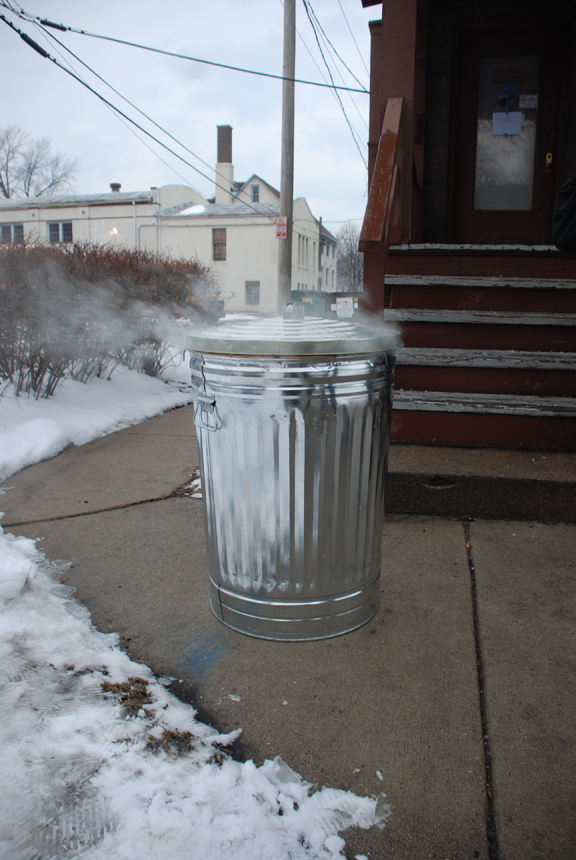

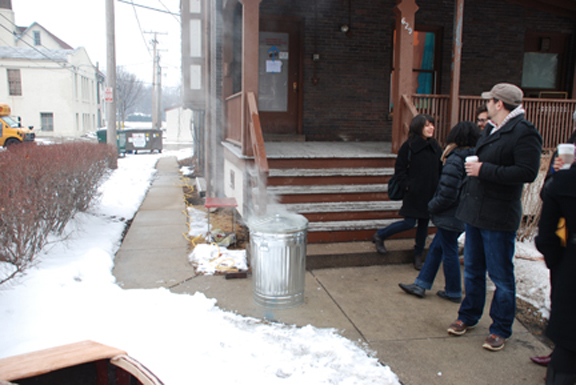
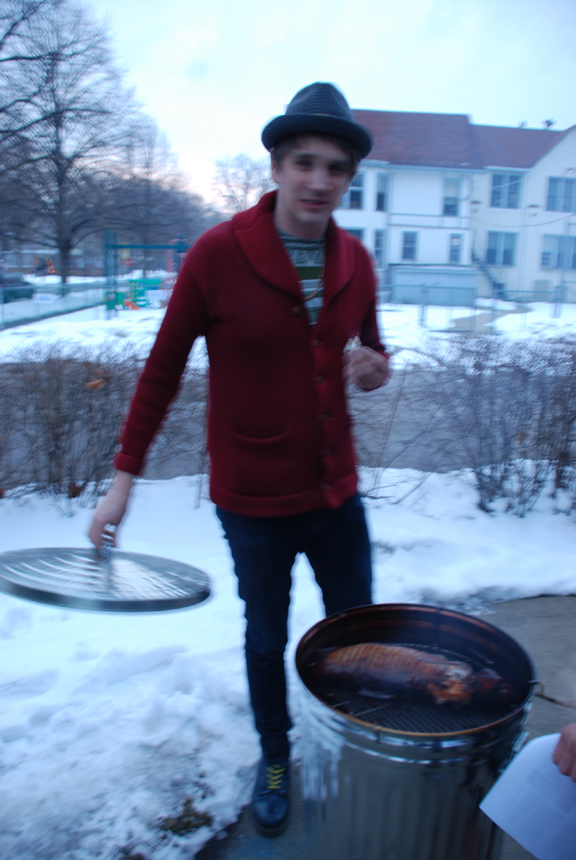
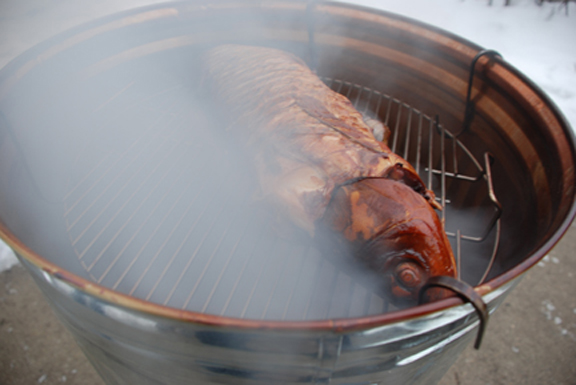
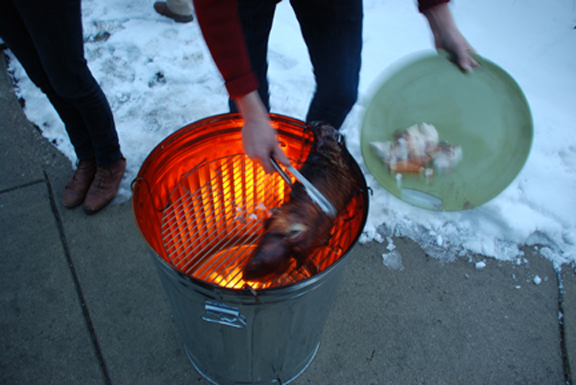
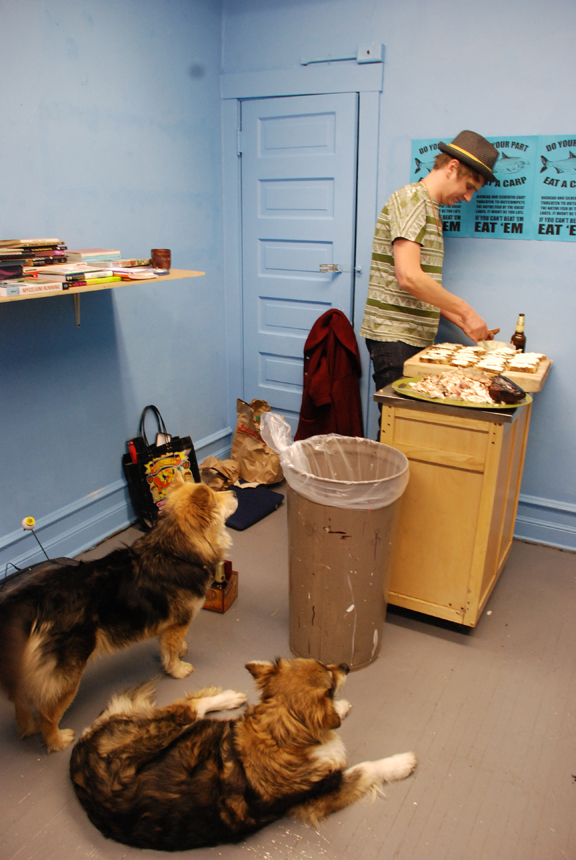
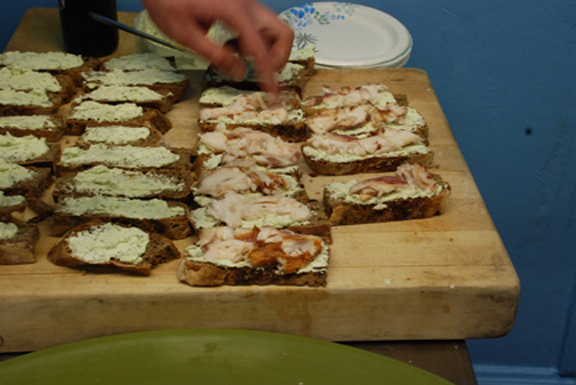
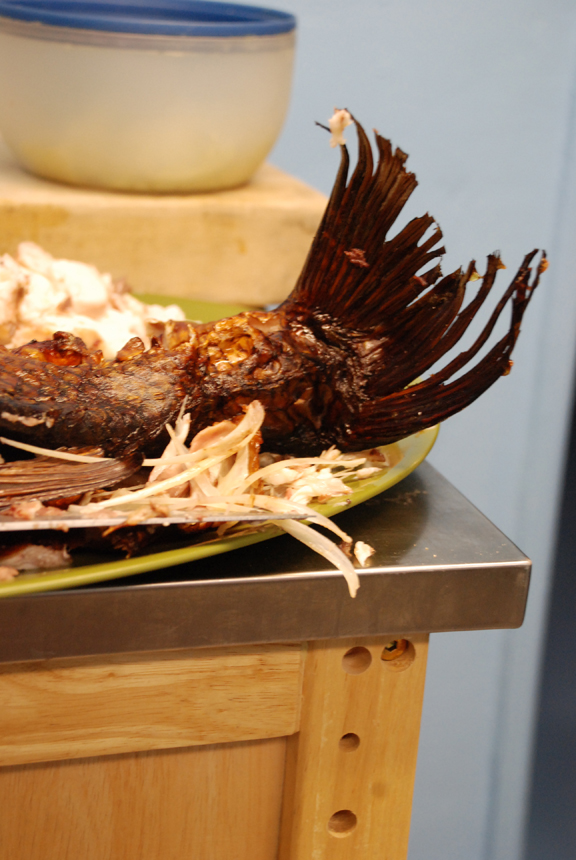
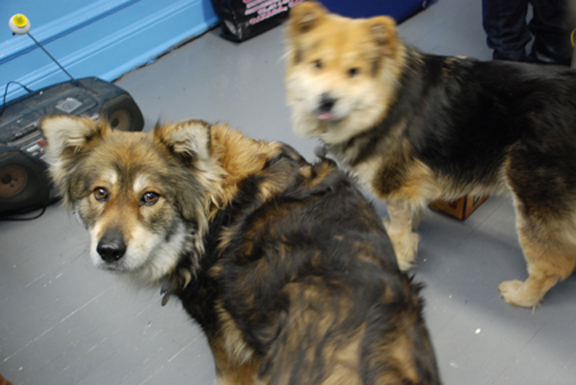

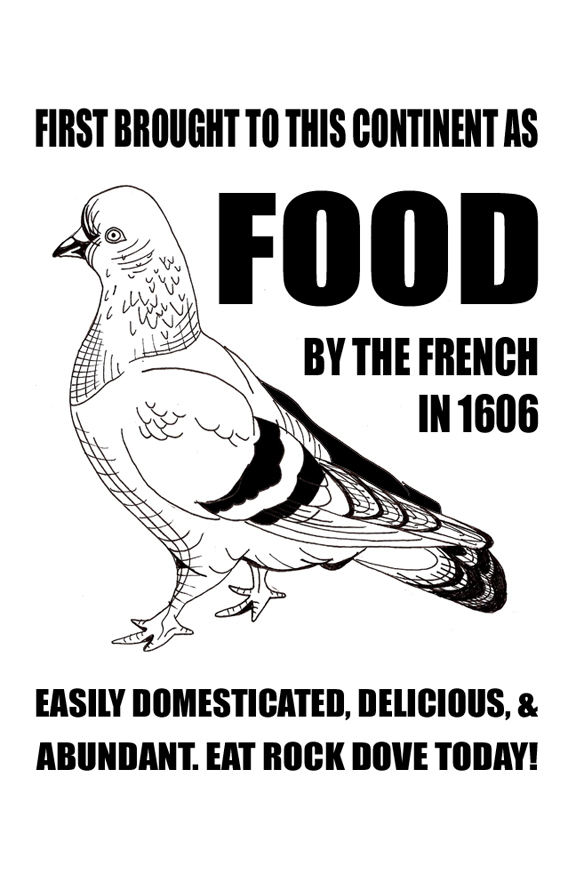


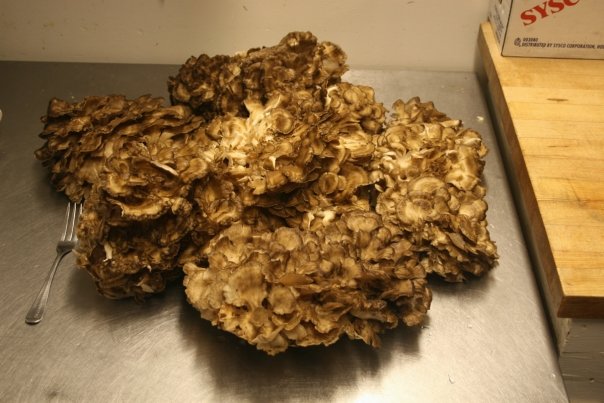

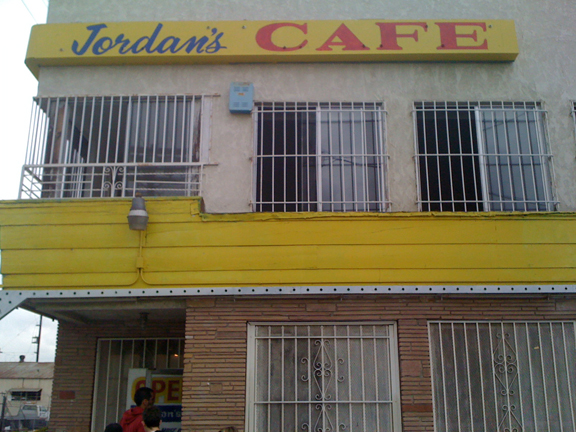
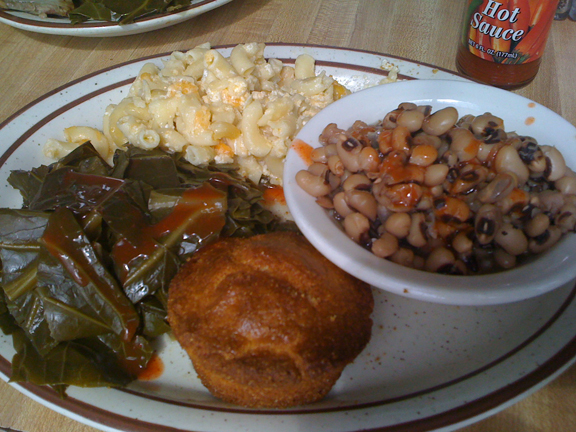
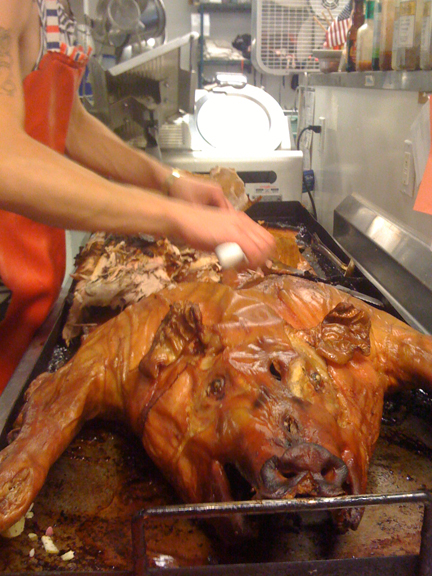


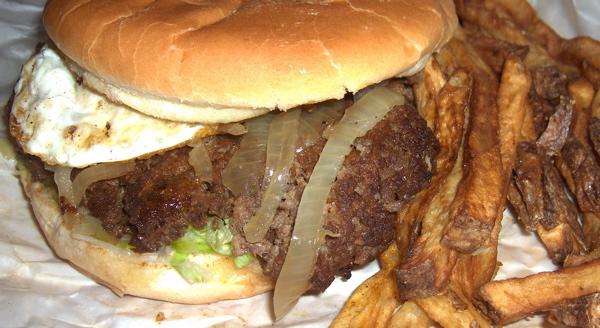
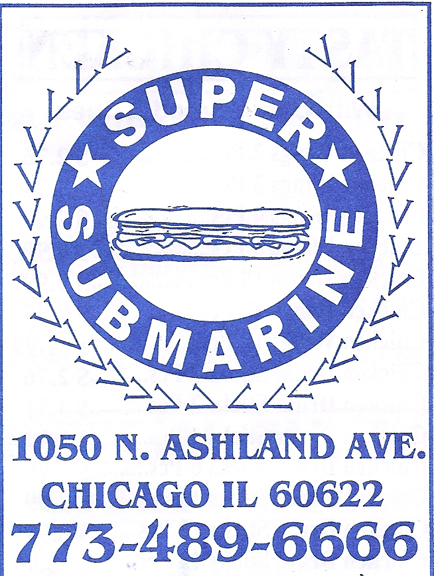
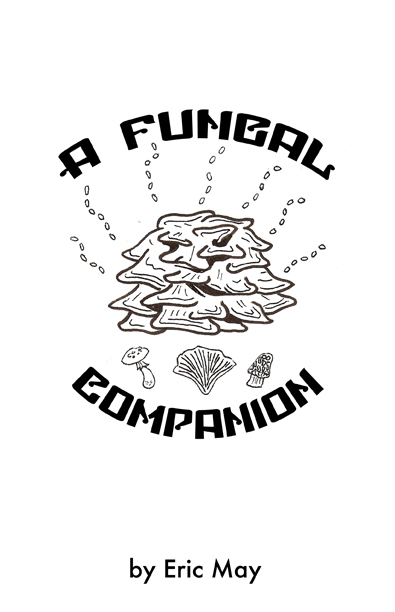
The Pigeon That I Love Dearly
Bird Steve and Carmen
I found a baby bird on my doorstep. It had been intentionally placed there by someone- it was on a piece of cardboard with a brick set up to protect it from the wind. They were excavating piles of trash from the thoroughfare between my building and the one next door, so it seemed as though perhaps the workmen had rescued the foundling but knew that the bastard Steve, my next door neighbor who’s trash it was, wouldn’t probably give a fuck about the chick. Our front door must have eminanted a certain air of empathy.
I had taken on baby bird projects in the past, always with tragic results. I decided that I had best just let nature take its course, so I moved the chick across the street to a patch of grass- a green island in a sea of concrete where the helpless animal might at least die in a quasi- natural setting.
My girlfriend had dumped me that day. I was walking home from a night of drowning my sorrows. My glance could not avoid that patch of grass where I had abandoned the chick. It was there, shivering. Drunk, and characteristically superstitious about love, I decided that this bird was a sign. A sign that I was a compassionate being. So, I would take in the bird and give to it the love that I had so much to give, particularly now that I was available.
Carmen is also an amateur naturalist. He identified the bird as pigeon- which had been obvious enough, I suppose. It seemed hungry. We stayed up with it most of the night, feeding it tahini with a medicine dropper. Carmen made a nice little nest in a shoe box. It was our baby. We ironically named it Bird Steve after my despised next door neighbor whose fucking trash pile was obviously to blame for the bird’s estrangement from its mother.
We fed him nutrient rich baby bird formula and he ate a lot. And he began to grow- maybe this baby bird project would have happy results. He was active, growing feathers, standing on two feet. He graduated to a milk crate. We let him wobble around to gain strength. He was nearly mature in about five weeks. And then one day he seemed weak. Within the afternoon he was dead.
I paid more attention to pigeons after acquainting with Bird Steve. There sure were a lot of them around. In the park just to the south of me, where I jog regularly- tons of pigeons. Lurking over Ekhart park is St. Boniface, a run-down and abandoned Catholic cathedral. A grand old building, it seemed as though it must have been quite a focal point of the neighborhood in its heyday. Now its gates cinder-blocked over. The pigeons roosted atop the church. One day while jogging past the church I was stopped by a man. He would not look at me straight in the eye and twitched a bit, it seemed as though he suffered from a condition. He asked me what happened to the church, I had no answers. He had grown up attending service there, so had his mother. He was confused that it was no longer open and thought it a shame. I was touched by his sadness and reached out for his hand. At that moment, we were showered by the flock of pigeons swooping down from atop their perch on St. Boniface. Perhaps I was high on adrenaline from the jog, but that man and his story at that abandoned cathedral and the serendipitous moment of the pigeons raining upon us felt to me like a transcendental moment.
I always noticed piles of stale tortillas and bread set out for the flock in front of the church. I imagined it was an old woman and perhaps the strange man’s mother, paying her alms to her now shuttered site of piety. The pigeons, the angels. Then one day I spotted a peregrine falcon roosting in a tree in the park. Once, endangered, these birds now were re-emerging with a taste for pigeon. As I jogged past the flock one afternoon, like a gunshot, a pigeon was struck by the falcon. The flock scattered. The falcon took to work on his prey. Birds of prey are really thorough in their butchery. This changed my relationship to the pigeon, perhaps resetting the reverence that had developed over the years in my experiences with the flock of Noble Street.
They moved from the cathedral after that day to the building across the street from mine. I could now view them from my bedroom window. One morning, early for me, walking home from Jessica’s I actually spied the pigeon feeder. A man with a garbage bag. The exchange was fairly efficient compared to my romantic wonderings- he dumped the goods, and whistled- that part was of interest- summoning the birds. They ate quickly and returned up the block to the building across from me. This bird was evidently easily trainable- maybe I could feed the pigeons. Maybe I could roost them on my roof.
The falcon had reminded me of my place in the food chain, so maybe this seeming pest could be a food source. The rat with wings. Some cultures eat rat. Many cultures eat pigeon apparently- first brought to North America as domestic fowl by the French in 1606. Enjoyed the world over from France to Morocco to Egypt to Vietnam. Not much different from quail. Squab apparently is the young pigeon, analogous to veal. I’ve paid big bucks for that stuff.
But how could I kill and eat Bird Steve’s family, the sacred guardians of St. Boniface, the cousin of the bird of peace?